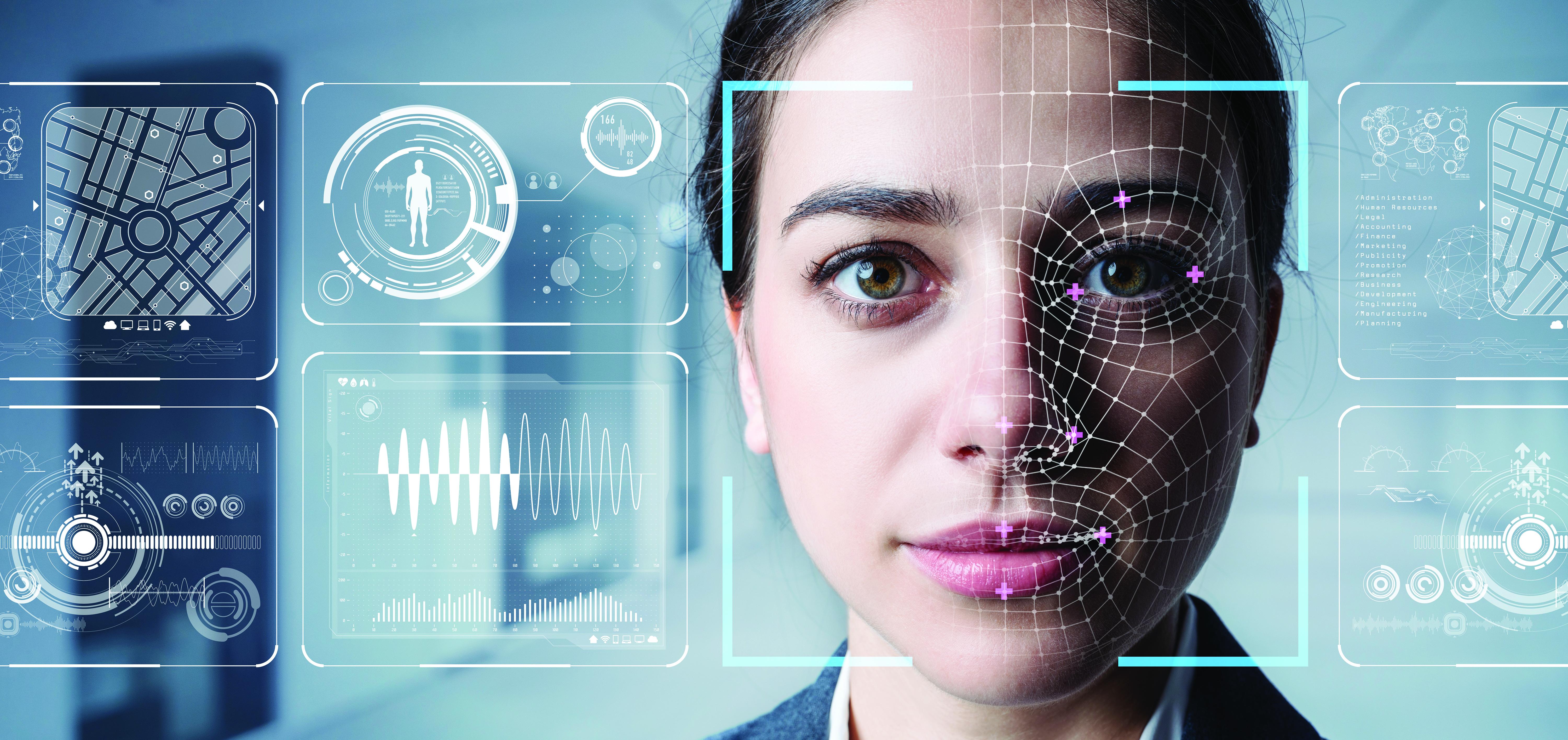机场刷脸登机是大势所趋吗?

世界各地都有机场在安检通道和闸口采用人脸识别技术。航空公司、机场和海关机构尤其是美国海关和边境保护局(CBP)非常青睐这种识别技术的精准度及其在加速处理机场拥挤人流方面的能力。
Biometric facial recognition technology is already being used at various points in the passenger journey at airports throughout the world. Airlines, airports and customs agencies—particularly US Customs and Border Protection (CBP)—like both the accuracy of the identification technique and its ability to speed passenger processing through crowded airports.
美国捷蓝航空和英国航空所作的此类尝试被称取得了巨大成功。随着航空客运量的激增,中国这个世界上人口最多的国家正迅速部署机场面部识别技术。
Trials, such as those conducted by JetBlue Airways and British Airways, have been touted as tremendous successes. And China is moving fast to implement facial biometrics at its airports as air passenger traffic soars in the world’s most populous country.
但有迹象表明,人脸识别技术在全球机场的陆续推广遭到了抵触。CBP和达美航空试图在西雅图-塔科马国际机场(SEA)部署面部识别技术时,该机场的运营商西雅图港务局迫使其放缓进度。
But there are signs of pushback against the ongoing rollout of facial recognition technologies at the world’s airports. When CBP and Delta Air Lines tried to implement facial recognition at Seattle-Tacoma International Airport (SEA), the airport’s operator, the Port of Seattle, forced a slowdown of the rollout.
预计2019年底,搭乘国际航班从SEA机场离境的达美乘客可以通过刷脸的方式登机。但西雅图港务局官员通过了一项决议,宣称“实施面向公众的面部识别技术”需要“明确合理、公正透明”。西雅图港务局工作小组将在3月31日前制定“可以清楚执行和衡量的”政策,并在一份声明中补充道,“官员也澄清,航港设施不得采用生物识别技术直至他们正式考量工作小组的建议并在2020年6月30日前出台相关政策。”
Delta passengers departing SEA on international flights were expected to be able to board aircraft via facial recognition starting at the end of 2019. But the Port of Seattle’s commissioners adopted a resolution stating that “implementation of public-facing facial recognition technology” needs to be “clearly justified, equitable and transparent.” A working group will develop policies by March 31 “that can be clearly enforced and measured,” the port said in a statement, adding, “Commissioners also clarified that no biometric technology shall be implemented at port facilities until commissioners formally consider working group recommendations and develop policy by June 30, 2020.”
公开透明而且合乎道德规范 Transparent & Ethical
西雅图港务局委员会主席Stephanie Bowman就此番推迟的原因作了相关解释。
Port of Seattle Commission president Stephanie Bowman explained the reason for the pushback.
她表示,“据我们所知,有多过20个机场已启用人脸识别技术,但没有航空港实施公开的流程来确保启用该技术可以妥善保护乘客的权利,受限、透明而且合乎道德”。“我们觉得,我们的社区不希望这种技术在没有任何公众讨论或反馈意见的情况下推出。当委员会在2020年通过相关政策时,我们将有机会创造美国在公众人脸识别方面的最佳实践。”
“We know of more than 20 other airports that have implemented facial recognition technology, but no other port has undergone a public process to ensure that implementation would protect passenger rights, and be limited, transparent and ethical,” she said. “We feel that our community expects more than to have this kind of technology rolled out without any public discussion or input. When this Commission adopts policies in 2020, we will have the opportunity to create the nation’s best practices for public-facing biometrics.”
西雅图航空港方面指出,这是试图“在私营部门和联邦合作伙伴未来几年迅速部署公众刷脸技术方面抢占先机”,并补充道,“目前,CBP已在美国11个机场和六个邮轮码头的入境闸口启用人脸识别技术,航空公司和机场方面已在20个机场的离境闸口启用人脸识别技术。”
The port noted that it was trying to get “ahead of a national rise in public-facing facial recognition technology deployment over the next few years by its private sector and federal partners,” adding, “Currently, CBP uses facial recognition technology for international arrivals processing at 11 US airports and six cruise terminals, while airports and airlines have implemented facial recognition for international departures at 20 airports.”
已启用面部识别技术的美国机场有:亚特兰大机场、华盛顿杜勒斯机场、劳德代尔堡机场(佛罗里达州)、休斯顿洲际机场、纽约肯尼迪机场、拉斯维加斯麦卡伦机场、洛杉矶国际机场、迈阿密机场、奥兰多机场、圣地亚哥机场、圣何塞机场(加利福尼亚州)和波特兰机场(俄勒冈州)。
US airports where facial recognition technology is used include Atlanta, Washington Dulles, Fort Lauderdale (Florida), Houston Intercontinental, New York JFK, Las Vegas McCarran, Los Angeles LAX, Miami, Orlando, San Diego, San Jose (California) and Portland (Oregon).
人脸识别技术在中国受到热捧 China Embraces Biometrics
机场人脸识别技术支持者表示,绝大多数乘客都赞成采用这种技术。
Proponents of facial recognition technology at airports say passengers have overwhelmingly voiced support for such a use of biometrics.
国际航空电讯集团总裁Sumesh Patel告诉ATW:“我们所作的调查结果表明,如果能使自己的生活更轻松更便利,有68%的乘客愿意提供自己的生物特征信息。”“如果能让他们清楚地确信,航班一起飞就会删除这些生物特征数据,他们通常会欣然接受这项技术的。”
“We do surveys and 68% percent of passengers were willing to share their biometric details if it made their life easier,” SITA Asia-Pacific president Sumesh Patel told ATW. “If they are provided with clarity and assured the data will be deleted as soon as the flight takes off, they are generally comfortable with the technology.”
SITA一直与中国政府合作,致力于在全国各地的机场引入生物识别技术。据SITA数据显示,27%的中国机场设有采用生物识别技术的自助登机门,而且这一数字有望在三年内升至66%。
SITA has been working with the Chinese government to introduce biometric identification at airports throughout the country. According to SITA, 27% of Chinese airports have self-boarding gates using biometrics and this figure is expected to reach 66% within three years.
Patel表示,中国机场正在设法部署这样一套系统,乘客抵达机场后,只需在经过第一个安检通道时站到自助终端前扫描自己的护照并拍照后,即可以刷脸的方式畅快通过后续的任何关卡或闸口。实际上,乘客的脸将成为自己的通行证。
Patel said Chinese airports are looking to adopt a system in which passengers step in front of a kiosk to have their passport scanned and a photo taken at the first touchpoint when they arrive in the airport, and then all subsequent touch points would be passed through using facial recognition. The passenger’s face, in effect, would become his or her passport.
SITA表示:“中国半数以上的机场计划在2022年之前为所有通道和闸口部署一证通式生物识别令牌。”
“More than half of the airports [in China] have plans for secure single biometric tokens for all touch points by 2022,” according to SITA.
Patel表示,乘客可以选择不以刷脸方式通行,同时坦承,这样做会延长机场客流的通行时间,甚至会长达3个小时。
Patel said passengers could opt out of biometric facial recognition, but conceded that doing so would likely lead to a much longer processing time through the airport, perhaps as long as three hours.
他指出,航空公司、机场和乘客将被迫广泛采用生物识别技术,否则将面临抑制航空客运量增长势头的风险。
He noted that airlines, airports and passengers will be forced to widely adopt biometric identification or risk stifling air traffic growth.
“未来20年,乘客人数将会翻倍,但机场数只会增长约5到6个百分点,因此需要依靠技术来支撑客流量的激增“,并补充道,大大加快乘客在机场通道和闸口的通行速度是应对这一增长预期的唯一可行方法。
“Over the next 20 years, the passenger numbers are going to double, but airports are only going to grow by about 5% to 6%, so there is a need to rely on technology to enable growth,” he said, adding that dramatically speeding passenger processing in airports is the only viable way for air traffic growth to match expected demand.
这条消息是Aaron Karp在Air Transport World发表文章的摘要。欲详细了解美国部署该技术的进展情况,请阅读全文。